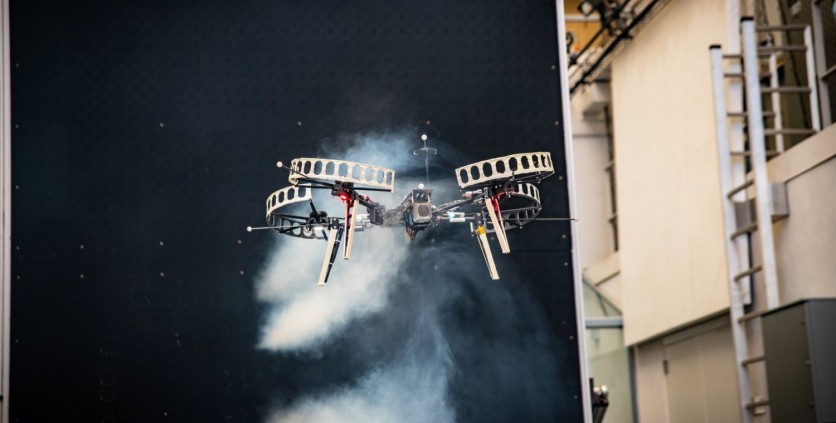A drone created by California Institute of Technology (Caltech) researchers can resist strong gusts that would render most existing versions inoperable.
The majority of drones can only function effectively in favorable weather. However, drones must be able to adjust to wind conditions in real-time to carry out essential jobs.
An answer has been discovered by a group of engineers from Caltech. They created "Neural-Fly," a deep-learning technique that enables drones to adapt to novel and unanticipated wind conditions and continue to fly even during catastrophic events like hurricanes.
Hurricane-Resistant Drone
According to a study that was published in Science Robotics, the five-pound drone can recalculate the meteorological conditions around it five times per second and adjust its course smoothly.
The drone was put through its paces at the Center for Autonomous Systems and Technologies at Caltech. This facility has a special 10-foot-by-10-foot array of more than 1,200 miniature computer-controlled fans that researchers can use to mimic anything from a mild wind to a gale.

E&T reported that the drone conducted a series of figure-of-eight maneuvers between small objects during the presentation despite being assailed by winds as high as 12.1 meters per second without losing balance.
The AI-powered drone, according to the team, has the potential to innovate different sectors from medical rescues to air travel.
The engineers are creating many drone types as well. One resembles a plane more than the other, but the one that employs the same software to reach medical situations is an autonomous flying ambulance. Within a year, the team hopes to be able to develop this design in a year.
Read also : 'Flying Hotel That Never Lands': AI Sky Cruise Ship Will Use Nuclear Energy to Fly in Luxury
All About The Neural-Fly
The neural network can be pre-trained by scientists using a meta-learning technique, requiring only updating a few essential parameters to adapt to the changing environment accurately.
The drones outfitted with Neural-Fly learned how to react to severe winds so successfully that their performance considerably increased after only accumulating 12 minutes of flight data.
In comparison to drones that are currently on the market and do not use neural networks, studies have thus far shown that the mistake rate is 2.5-4 times lower, according to E&T.
The group has also demonstrated how to share flight data collected by one drone while another drone is responsible for creating a database of information for autonomous vehicles.
Caltech's engineers claim that since the drone is only an enhanced version of a standard drone rather than a completely new design, the system may be easily marketed and extended to various robots and aircraft.
The research, which was published in the international journal Science Robotics, is the forerunner of a new technological era that could make drones more practical and widely accessible.
Related Article : New AI That Predicts Heart Attacks Could Save Patients From Cardiac Death For 10 Years
This article is owned by Tech Times
Written by Joaquin Victor Tacla
![Apple Watch Series 10 [GPS 42mm]](https://d.techtimes.com/en/full/453899/apple-watch-series-10-gps-42mm.jpg?w=184&h=103&f=9fb3c2ea2db928c663d1d2eadbcb3e52)



